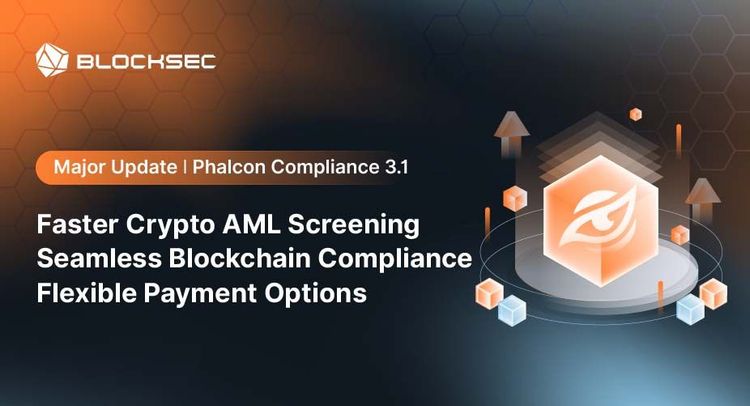Introduction
As Decentralized Finance (DeFi) continues to grow, it offers revolutionary possibilities for conducting financial transactions beyond the traditional banking system. However, the open and interconnected nature of DeFi protocols also makes them vulnerable to cyberattacks, posing significant risks to both users and the stability of the DeFi world. This vulnerability brings us to a crucial concern: identifying the most effective strategies for detecting and preventing DeFi hacks.
In this article, we will explore the various types of attacks targeting DeFi protocols, understand the motivations behind these attacks, and assess their potential impacts. Additionally, we will delve into the specific vulnerabilities that make DeFi protocols susceptible to breaches and outline essential preventative measures to secure these protocols. By addressing these key areas, we aim to provide a clear roadmap for enhancing the security and resilience of DeFi systems.
Challenges in Decentralized Finance (DeFi) Security
What are DeFi Attacks?
DeFi attacks exploit the vulnerabilities of smart contracts, which are the foundational elements of decentralized finance protocols. These smart contracts are automated, self-executing contracts with the terms directly encoded into the blockchain. While this automation offers significant efficiency and transparency, any inherent flaws or oversights in the contract code can become serious vulnerabilities. These vulnerabilities can then be targeted by hackers who seek to exploit them for financial gain. By manipulating or accessing these flaws, attackers can initiate unauthorized transactions, drain funds, or disrupt the normal functioning of the DeFi protocol.
Why do Hackers Target DeFi Protocols?
DeFi protocols are attractive targets for cybercriminals primarily due to the significant economic rewards involved. For instance, in August 2021, the Poly Network was compromised, resulting in the theft of cryptocurrencies valued at approximately $610 million. This large sum highlights the immense financial incentives for attackers.
Additionally, DeFi's rapid innovation often leads to security being overshadowed by new developments, increasing vulnerability risks. The anonymity and irreversibility of transactions on these protocols further complicate the tracing and recovery of stolen funds, making DeFi an even more attractive target for cybercriminals.
The Impact of DeFi Attacks
The consequences of DeFi attacks are multifaceted and significant:
- Financial Losses: Individual users can suffer extensive financial damage, which can deter new users from adopting DeFi technologies and shake the confidence of existing users.
- Erosion of Trust: When a protocol is compromised, it not only affects the direct victims but can also lead to a loss of trust across the DeFi ecosystem.
- Market Volatility: Significant attacks often lead to sudden drops in affected tokens' value and can cause market-wide panic and instability.
- Regulatory Scrutiny: High-profile incidents can attract attention from regulators, leading to stricter regulations that could hinder the development and adoption of DeFi technologies.
DeFi attacks target the vulnerabilities in smart contracts, which are essential components of decentralized finance protocols. These attacks not only result in significant financial losses but also erode trust and create market instability. With these challenges in mind, it is important to explore the specific scenarios under which project operators might find themselves particularly vulnerable to attacks. Understanding these situations can help in developing more robust defenses and preventive measures.
Reasons Why DeFi Protocols Are Vulnerable to Attacks
Code Security
- Unaudited Contracts: Many DeFi projects are pushed to market without comprehensive audits in a bid to capitalize on trending opportunities, leaving critical vulnerabilities unaddressed.
- Unresolved Audit Findings: Some projects, despite undergoing audits, fail to fix all the discovered vulnerabilities due to resource limitations or prioritization of speed-to-market.
- Zero-Day Vulnerabilities: These are previously unknown vulnerabilities that attackers exploit before they are detected and patched by the developers. This includes vulnerabilities that have not been identified during audits, remaining hidden until an exploit reveals them.
- Lack of Re-audits After Updates: Regular updates to DeFi protocols are necessary for adding features and fixing bugs. However, each new line of code can potentially introduce new vulnerabilities, especially if not followed by thorough re-audits.
Operational Security
- Private Key Leaks: The security of blockchain transactions relies heavily on the secrecy of private keys. Exposure of these keys due to poor security practices can lead to unauthorized access and fund theft.
- Privileged Operations: DeFi protocols sometimes include mechanisms for privileged roles, which can perform critical functions. If these privileges are misused or hijacked, the results can be disastrous.
External Dependencies
DeFi protocols often rely on external systems such as oracles or other smart contracts, which can themselves be vulnerable to attacks. A security breach in any of these can propagate through the entire system, affecting the DeFi protocol relying on them.
Best Practices for DeFi Hack Detection and Prevention
Before Protocol Launch
-
Secure Development and Testing: To ensure the highest level of security for a project before its launch, it is crucial to adhere to secure coding practices. This includes rigorous code reviews and integrating only reliable libraries and frameworks to minimize risk. Additionally, comprehensive internal testing, such as unit and integration tests, ensures the functionality and robustness of the system.
-
External Security Measures: Enhancing security through external means is equally important. Engaging independent security experts to perform thorough smart contract audits helps identify and rectify potential vulnerabilities. Furthermore, implementing a bug bounty program invites global security researchers to find and report vulnerabilities, significantly strengthening the project's security before it goes live.
After Protocol Launch
Deploying Monitoring Systems
To enhance security and maintain operational integrity, project operators can deploy monitoring systems that enable real-time awareness of security statuses within their DeFi projects. Such systems are crucial for detecting anomalies and potential threats as they occur, allowing for immediate response to mitigate any adverse effects.
The Limitations of Solely Relying on Attack Monitoring
While monitoring platforms are adept at detecting threats, they are not without their limitations. One significant issue is the potential for delayed alert recognition. If the recipients of these alerts do not notice them immediately, there could be a lag in the response time. Even brief delays can prevent the timely execution of crucial countermeasures. Furthermore, once an alert is acknowledged, it typically requires a coordinated effort involving discussions and consensus among various stakeholders to determine the appropriate action. This decision-making process, including the necessary approvals, can take several hours, thus prolonging the response time and possibly reducing the effectiveness of the planned interventions.
Phalcon: the Best DeFi Hack Detection and Prevention System
Advanced Real-Time Monitoring with Unmatched Accuracy
Phalcon, a groundbreaking platform developed by BlockSec, excels in real-time monitoring of hack attempts within the blockchain space. It supports users and protocol operators by detecting suspicious transactions quickly and delivering instant alerts, enabling effective and timely interventions to prevent financial losses.
The platform is distinguished by an exceptionally low false positive rate of less than 0.001%. This high level of accuracy is achieved through sophisticated AI algorithms and a deep understanding of DeFi semantics and blockchain mechanics, enabling Phalcon to accurately differentiate between legitimate and malicious activities. Users can further refine this precision by setting custom trigger rules based on specific criteria like changes in token amounts, prices, key variables, sensitive events, and function invocations. Alerts are triggered only when a transaction meets the predefined risk level combined with these user-defined settings, minimizing false positives to an unprecedented degree.
Moreover, Phalcon extends its monitoring capabilities beyond simple attack detection to include a broad spectrum of operational risks within blockchain projects. It continuously monitors for critical changes such as modifications to admin keys, role grants, key variables, and contract upgrades. Phalcon also keeps an eye on adjustments in time locks, new proposals, and price oracles, ensuring comprehensive oversight and enhanced security throughout the lifecycle of blockchain operations.
Proactive Attack Mitigation: Blocking Threats in Real-Time
Phalcon not only identifies threats but also actively counters them by integrating direct attack blocking mechanisms. This proactive approach addresses the critical time gap often present in traditional monitoring systems between threat detection and response. Upon detecting a potential threat, Phalcon can undertake direct actions such as pausing transaction pools or preemptively transferring assets to safe accounts designated by the user. These immediate defensive measures effectively reduce potential losses to zero, providing a robust layer of preemptive security that prevents financial damage before it can occur.
For example, in a scenario where Loot faced a threatening proposal that could have drained 477 ETH from LootDAO, Phalcon quickly identified the danger and alerted the project’s team, effectively averting a possible loss valued at roughly $1,200,000. In another incident involving Paraspace, Phalcon promptly executed a rescue transaction that safeguarded approximately $5,000,000 in assets. Throughout its two years of operation within internal systems, Phalcon has successfully intercepted more than 20 attacks, preserving digital assets worth in excess of $15 million.
By combining advanced real-time monitoring with proactive intervention, Phalcon significantly enhances the security, operational efficiency, and financial stability of blockchain activities, setting a new standard in DeFi security solutions.
How to subscribe to Phalcon?
Phalcon is a SaaS platform. To subscribe to Phalcon, visit BlockSec's official website and navigate to the Phalcon product page. There, you will find information about the different subscription plans and pricing options. Choose the plan that best suits your organization's needs and budget. Once you have selected a plan, follow the instructions to complete the subscription process, which may involve providing your contact and payment details.
Access the platform: https://phalcon.blocksec.com/block
Subscribe directly: https://account.blocksec.com/login?referer=https%3A%2F%2Fapp.blocksec.com%2Fsubscribe%2Fblock%2Fcustomize
Book a demo: https://calendly.com/blocksec/phalcon-collaboration
Conclusion
As the decentralized finance (DeFi) landscape continues to grow, its inherent vulnerabilities necessitate vigilant protection strategies. Our discussion emphasized the critical need for DeFi protocols to adopt comprehensive security measures. By integrating robust security audits, bug bounty programs, and advanced systems like Phalcon — which not only detects but actively prevents threats in real time — DeFi platforms can enhance their defenses. While no system can guarantee absolute security, these proactive measures can significantly bolster a protocol's resilience against cyber threats, contributing to a safer operational environment and fostering greater trust within the DeFi community.
Related Reading:




